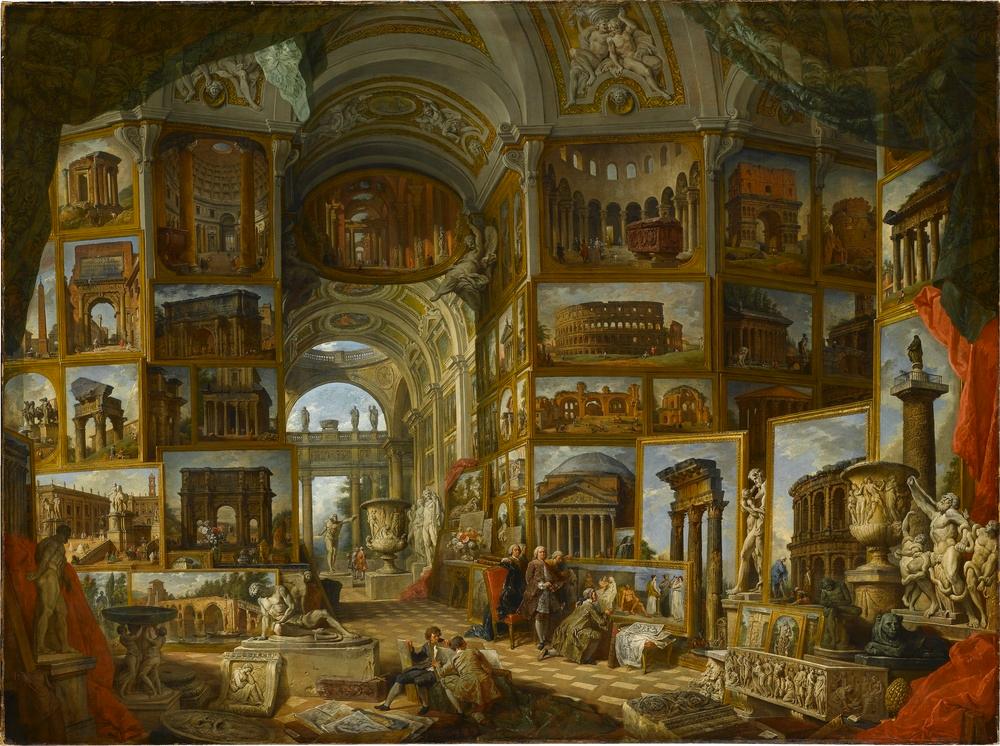“In the 18th century the so-called Grand Tour became a rite of passage for aristocratic young men. The journey typically involved three or four years of travel around Europe and included an extensive sojourn in Italy, as Rome was considered the ultimate destination for what might now be characterized as cultural tourism.” (Encyclopædia Britannica)
Sadly, I didn’t have three or four years for a journey through the cultural capitals of Europe and I am also not a young aristocrat, but my destination was the same, the Eternal City, Rome. However, the reason for why I draw this connection is probably a similar inspiration for starting this travel. As the British traveler Charles Thompson once described himself, as an example for many Grand Tourists, as “being impatiently desirous of viewing a country so famous in history, which once gave laws to the world; which is at present the greatest school of music and painting, contains the noblest productions of statuary and architecture, and abounds with cabinets of rarities, and collections of all kinds of antiquities.”, I can very well identify with his motives, although Italy is not the epicenter of our contemporary art world. I did not only want to travel to another place, but also travel back in time to find out more about where our architecture, art, customs, laws and rules for common behavior come from. And what better place to do that than in three Italian cities which are, together with Ancient Greece, considered as the cradle of Europe’s art and culture.
However, the route of the Grand Tour was never something fixed, so it was up to the traveler to find his own route to Rome and so did I. After writing the Polish exam at the Uniwersytet Śląski, I took the bus to Kraków, the city of the Jagiellonians. My stopover there was only one hour, but this was enough for buying a Georgian bread for dinner and for visiting two volunteers in their flat. My next bus left Kraków at 10pm, crossed the Tatry and when I woke up, I was already in Hungary.
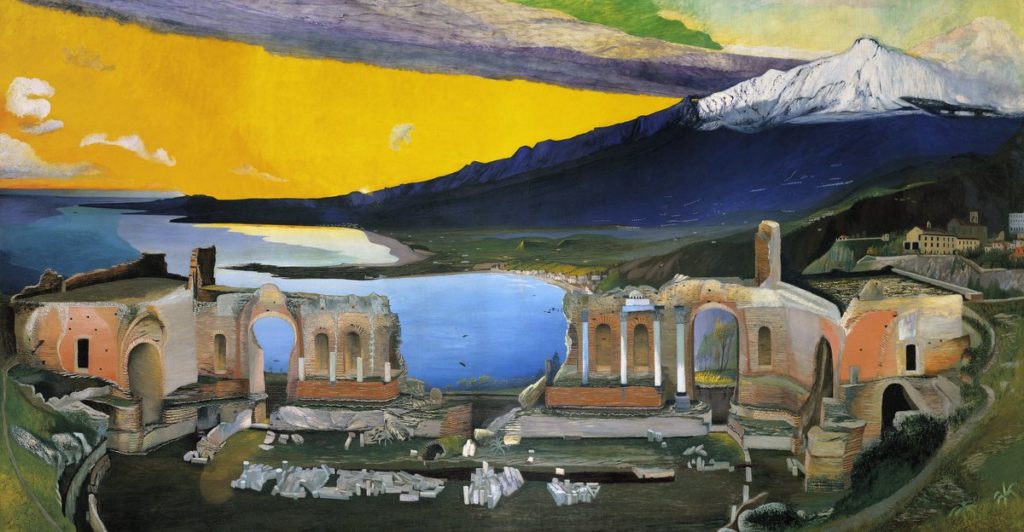
1904-1905
Tivadar Csontváry Kosztka
Hungarian National Gallery
Budapest, the Pearl of the Danube, awaited me with very helpful and kind people, awesome baked stuff and a language of which I still have absolutely no idea how to pronounce it. The main reason for why I chose Budapest was something else though. Imagine walking up a hill, shivering from the cold, with icy wind blowing in your face and only gray buildings in front. Our economic system is based on the longing for fulfilment of our needs and therefore my decision for Budapest was determined only by my wishes at this point. I wanted to be in a warm, cozy place with no storms and no ugly building hurting my eyes filled with tears. So, I became weak, I fell for the pleasures of our world, and I found my place, Széchenyi gyógyfürdő. Impossible to pronounce, but impressive on the inside. A bathing temple based in a Neo-Baroque palace with an amazing Art Nouveau entrance hall and chattering Hungarian pensioners taking their morning swim. So how was my stay there? Well, relaxing would be a clear understatement. I arrived in the City Park at around 7am and entered the bath before sunrise. Approximately ten hours later, after spending an hour in the sauna, two and a half hours sleeping in the main hall and several hours in the warm pools, I left the bath. It was dark outside.
Night 1 I left my hostel, walked by Kálvin tér and a few antiquarian bookshops. My goal was set, Gettó Gulyás, a place serving traditional Hungarian specialties recommended by my family and a podcast about the revival of traditional European cuisines. It turned out to be just fine, as I am not really the biggest fan of meat and I felt a bit underwhelmed, but then, Budapest’s Jewish Quarter captivated me and opened the gate to one of these magnificent nights I can only have in this city. I was looking for a dessert after the mediocre meal and so I wandered around the quarter looking for a bakery that was still open. This part of the city conceals a certain magic that is impossible to describe because I neither have the words for it nor am I even sure what this feeling really is. Eventually, I found a Persian bakery with delicious sweets from the Middle East served in the middle of the Jewish Quarter in the middle of Europe. Not only was the food very nice, but I also had a great conversation with the Iranian baker. It was also at this moment when I realized that my journey for learning and discovering, my small Grand Tour, had finally started.
Night 2 I was too late for the parliament, so I had to choose between Heroes’ Square and National Gallery. I chose the castle in the Buda-sky I saw on the day before, sitting enthroned over the city and the river. What awaited me was a great collection of Hungarian Art Nouveau, a Gauguin with black pigs and Mount Vesuvius in the bright colors of a romanticized sunset.
Night 3 I started the night on the top, in a wonderful old café on mighty Buda hill. I went to the steps below Fisherman’s Bastion, the same old gloomy orange-yellow light as the last time, still amazed by it. I descend into the thrilling nights of Pest, starting with a nice stew for dinner with Hungarians playing Under the Bridge. Then, without destination, I wander around, I enter Szimpla Kert and I’m blown away by the magic of this beautiful chaos. This Orpheus in the Underworld adventure ends in a literature café with a podium discussion on the issues of the restricted independence of the Polish judiciary and what it means for Hungary and the rest of our civilized continent.
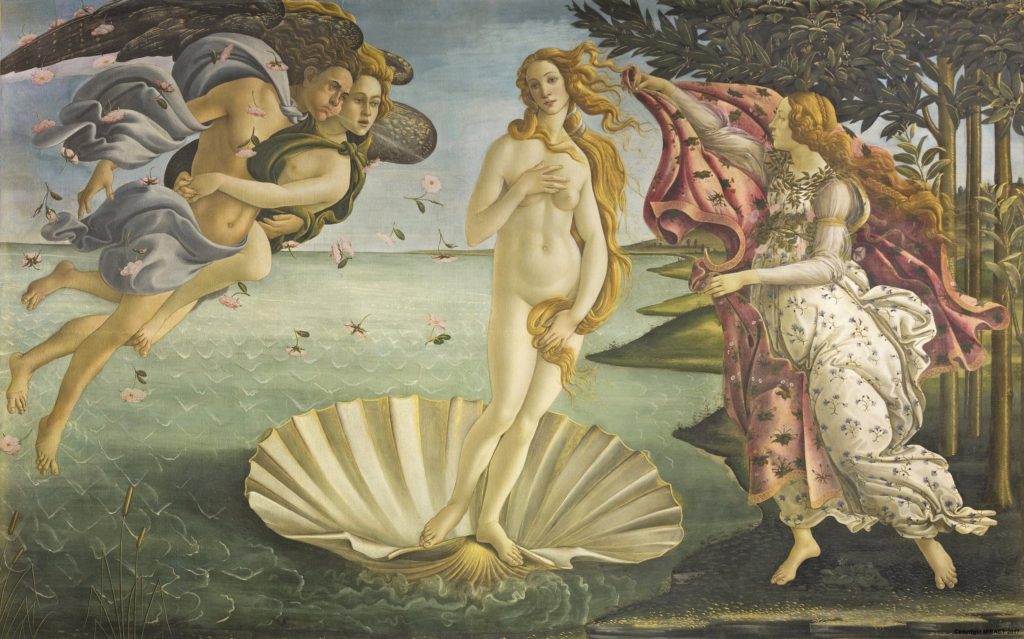
1485 ca.
Sandro Botticelli
Uffizi Galleries
Florence, the cradle of the Renaissance, welcomes me with rolling hills and lush green in the middle of the winter. Cypresses and stone pines stand out in the landscape like perfectly polished statues and together they form a perfect symphony, which has inspired so many great minds, Leonardo and Michelangelo are only the jewelry on the crown of this nature-based humanism. The most beautiful place is a little terrace at the top of the Boboli Gardens in front of a porcelain museum. Everything is so picturesque, I want to catch it with my eyes and keep it forever, but the vanity of beauty and moments wins. The whole park is covered with a carpet of beautiful light coming from the sun’s bright but soft rays. Every small alley, every single tree, every human face becomes more beautiful simply through the magical power of sunlight. There are markets on the streets, people attend masses in one of the uncountable churches or just enjoy the weather in the narrow alleyways of this wonderful city.
Nighttime again. I spent four hours in the Uffizi gallery. It’s unbelievable how the history of art unfolded in front of my very eyes. Leaving behind the two-dimensionality of the Middle Ages, Giotto was probably the first genius. He pathed the way for the first steps of Realism and Filippo Lippi portrayed the most beautiful Florentine women as Madonnas. One of his students, Sandro Botticelli added beauty, pure, unreached beauty. His purification of natural beauty was succeeded by Leonardo’s symmetry, Michelangelo’s perfection and Raphael’s synthesis, the trinity of the High Renaissance. Michelangelo’s David, unbeatable in flawless perfection, is the culmination of this apotheosis of human artists. Caravaggio gave light and shadow to the world of art by lightning a candle in his paintings which continued to inspire the Dutch painters of the Golden Age. Eventually, this was the end of the Renaissance in Florence and it created a European roundabout with several exits like Baroque and Dutch Golden Age. Italy could not have welcomed me any better and Florence, viewed from the terrace of the Piazzale Michelangelo, really is the cultural hotspot of Europe.
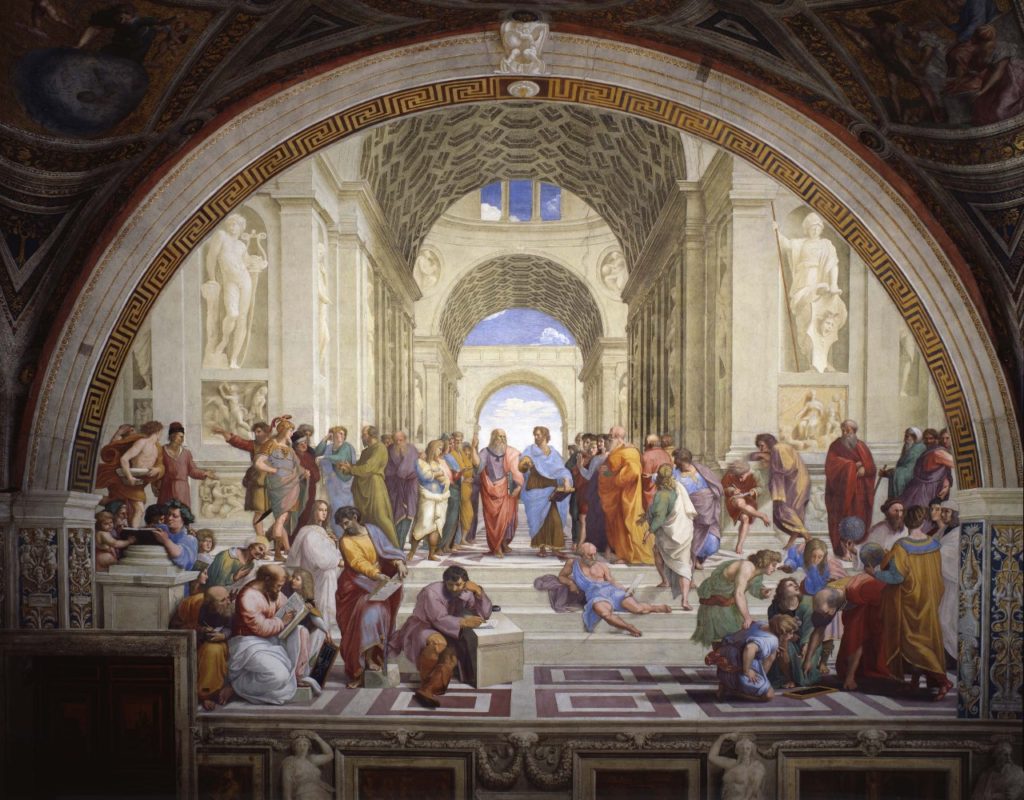
1509-1511
Raphael
Vatican Museums
Rome, the Eternal City, built on seven hills, but not in a day, consisting out of numerous layers is like a marriage cake. Antique ruins, medieval campaniles, Renaissance churches, in Rome you can find it all. New pieces are added to the puzzle of art history. The cupola of Rome’s Pantheon was the model for many following domes such as St Peter’s, Santa Maria del Fiore and the U.S. Capitol building. Emperor Constantine’s basilica was the prototype for all Christian churches. Rome was the center of the world for so many centuries and its imperial grace is still very visible.
The Mediterranean kindness is invaluable, everyone is willing to help. This is in a drastic contrast to the street vendors around the Colosseum. I long for the “good old times”, wouldn’t it be awesome if I could travel back in time to do such a Grand Tour as young aristocrats did? I despise today’s plastic culture with selfie sticks and useless garbage, but I’m also part of it, because it’s a mass culture. These young snobs doing a Grand Tour also “took pictures” of themselves by paying a painter for making a portrait of them. The only reason why this plastic culture exists nowadays is the coexistence of wealth around different parts of the world, so more people can afford to travel, and more travelers can afford to waste their money on such things.
Rome is white in its triumph arches and the Fontana di Trevi. Rome is colorful in Trastevere and Campo de’ Fiori. Rome is monumental in the Città del Vaticano and the Piazza Venezia. Rome, the million village along the Tiber’s banks. All neighborhoods are different, many of them have piazze where locals meet just like in the many cafés, pasticcerias and fornos. Supplì, pizza, pasta, tiramisù, Jewish fruit bread and a ricotta-fruit-tarte; La Dolce Vita is everywhere, people have a good time, the city lives and the money flows out of the wallets just like the Tiber around the Isola.
This was also the case for the many Renaissance and Baroque churches all around the city. In what other city can you see paintings and frescos by Caravaggio, Michelangelo and Raphael for free? However, the highlight of my time here was finally seeing the Vatican, a place loaded with history, power, intrigues, art, gigantism, beauty, money, monuments and dead saints. I arrived early in the morning together with thousands of pilgrims to see the Pontifex Maximus, the greatest bridgebuilder. While it is almost ridiculous to use this term when referring to most popes, this one is certainly different. Papa Francesco was celebrated like a pop star, but a star you can touch who takes his time for the people, a pope that smiles. The believers are united here for this moment. The Germans are sitting, the Brazilians are cheering, and the Poles are singing. If only this love could unite us like that everywhere and forever.
After focusing on the spiritual part of this holy place, I finally had time for probably the greatest collection of art and culture on this planet. The six hours I spent there were barely enough for having a look at some parts, because of the immense dimensions of this collection. It is also here where you can find probably the greatest work of art in history, the ceiling of the Sistine Chapel. However, I was already overwhelmed at this point and I just saw one of my favorite paintings, the School of Athens. This is the one painting that perfectly represents the ideas of the Renaissance artists, the Grand Tour travelers and myself. Isn’t learning just absorbing the environment around you? If you continue this train of thought, then it only makes sense to surround yourself with all kinds of different stimulations and thoughts already thought. The Ancient Greeks and Romans were really advanced in their art, technology, philosophy, medicine and in many other fields. If one could collect all their knowledge, this person would have a huge advantage, because progress normally starts in the past.
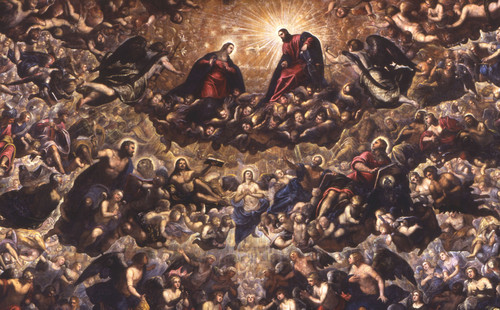
1588-1592
Jacopo Robusti detto il Tintoretto
Doge’s Palace
Venice, La Serenissima, is something special. Gentle waves spread over the flat waters of the lagoon. The boat sails with the same monotonous sound. The whole scenery out of water and islands appears to be washed in a certain blue-green-gray mixture. Everything seems so even and harmonic.
Burano, with an unparalleled palette of colors, the canals of the historic center and the cobblestones of Mykonos is a colorful explosion and complete harmony at the same time. During summertime, this place will probably be overcrowded with the other tourists I so sincerely love. In winter the sun is missing. This is the downside of traveling during this time of the year, but luckily, the January weather only caught me here. However, eventually, this was more of an upside for me. The ambiance in the small alleyways away from the constant flow of tourists and the steady waters in the channels shimmering in green and gray cannot be matched by anything in this world.
The Republic of Venice was the dominating power for many centuries during Medieval times and in the early modern period. The Ca’s, palazzi of rich citizens, along the Canal Grande appear in a resplendent harmony of pure power in Venetian Gothic. The Doge’s Palace represents the pride, the wealth and the ideals of the Republic. The senate and the rooms of the jurisprudence, everything seems almost a bit Kafkaesque. The machinery of government was impenetrable for its citizens, just ask Casanova.
As splendid as the pompous rooms in the buildings around San Marco are, the real magic of the naval power only unfolds in the evening, outside with the view of the endless sea. When the sun sets over San Marco, when one has to stop his prayers in the basilica and when the street lights illuminate the whole scenery with such a sparkling shine, that the matt colors swim over the lagoon like a transcendent carpet of magic, then Venice is the most beautiful place in this world. And when you then go to the front of the Piazzetta and you see the dark blue of the sky reflected in the deep blue waters of the lagoon, a perfect synthesis of sky and sea, and you never want to lose this sight, then Venice blossoms in all its prosperity. In this magical maze of calm channels and dimly lit alleys, I lost myself somewhere between the Arsenale and the Ghetto, only to escape it by boat just before it was too late.

